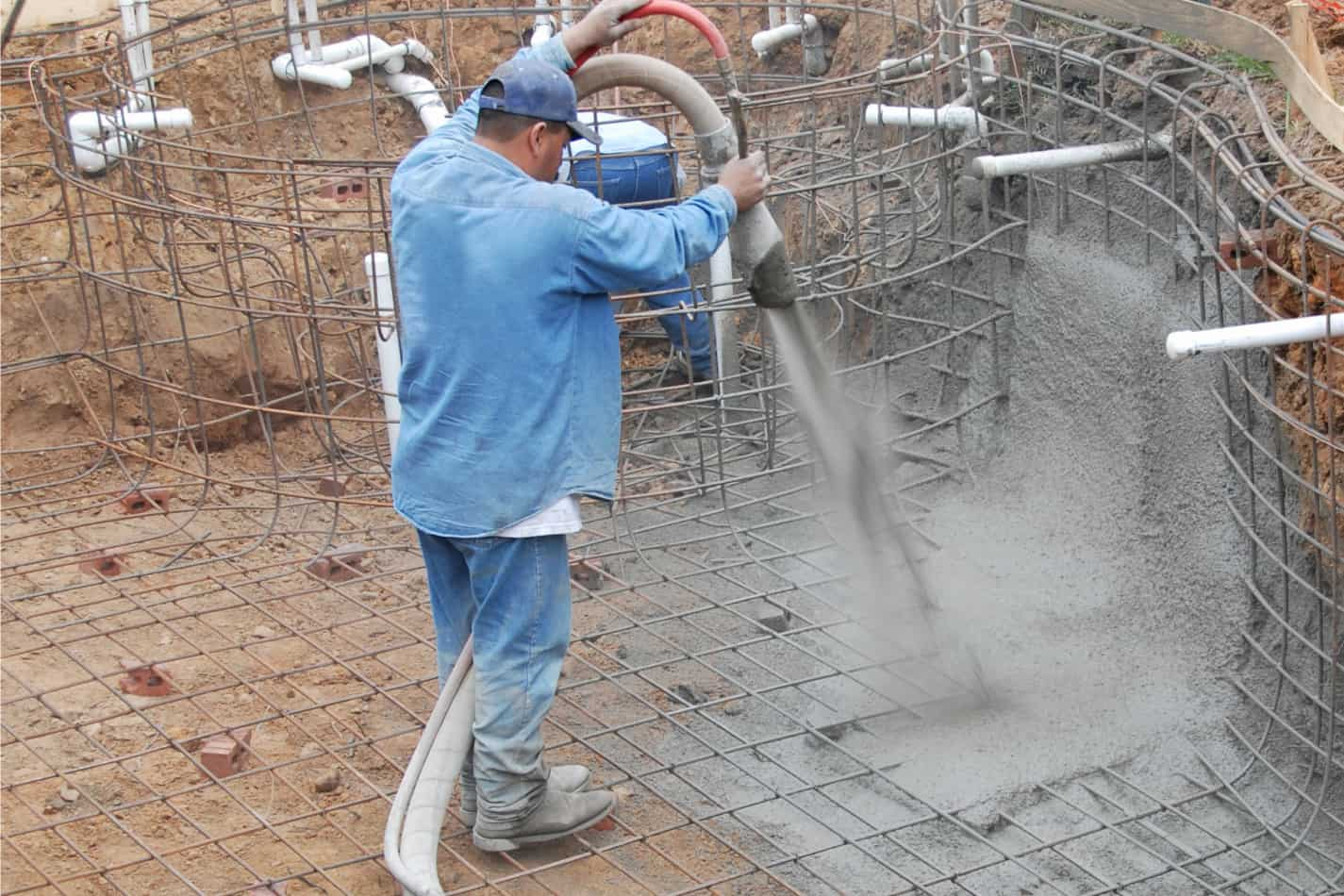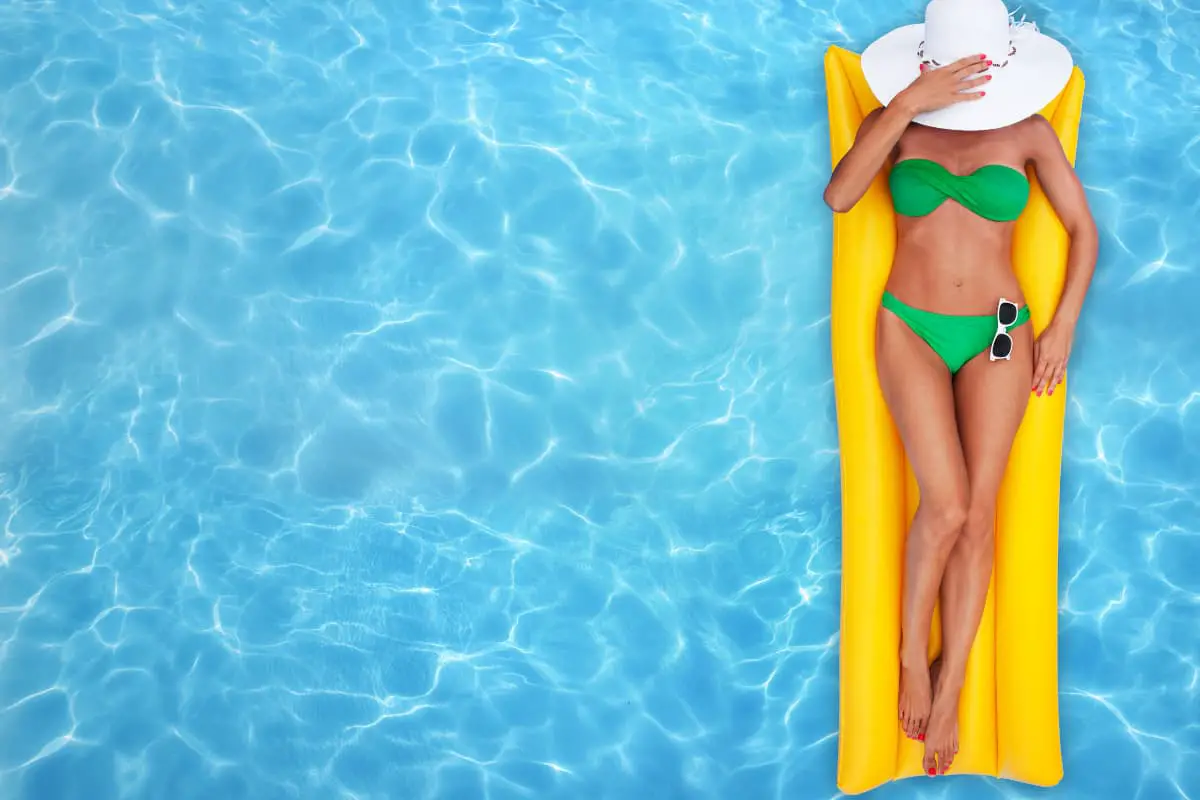Are Gunite Pools Rough on Feet? Know the Facts!

As an Amazon Associate I earn from qualifying purchases.
A backyard swimming pool is a fantastic way to get the most out of your home. A pool makes hot summer days more pleasant, and even living near water is beneficial to your general health.
Inground swimming pools made of gunite concrete are an excellent, long-lasting, and highly customizable option. And as a result, they remain a popular choice for most homeowners.
However, one major disadvantage of a gunite pool is the rough bottom, which is exceedingly abrasive and uncomfortable for many swimmers and children.
It is not uncommon for swimmers to scrape or irritate their feet if they are in the pool for extended periods. Also, sitting on the pool’s steps or benches will almost certainly snag a swimsuit. Fortunately, this drawback can be resolved.
Gunite pools typically require more significant maintenance to keep them in excellent shape. They can, however, survive 7 to 10 years before needing to be resurfaced.
When that time comes, it’s critical to understand your alternatives and take the necessary steps to make the best decision for your backyard space.
But what do you do about that? Read on to learn more.

Are gunite pools rough on feet?
Yes! Gunite pools are rough on the feet. If you’re going to build a gunite pool, think about the texture you want on the floor and walls.
Many swimmers with sensitive feet may find a gunite pool’s gritty floor too harsh. While a swimmer rests on the bench or steps, unfinished gunite has been known to catch or shred a swimsuit.
You may want to place your feet or hands in a concrete and fiberglass pool to feel the difference. Compared to fiberglass, the smoothest concrete pool surface is a cheese grater.
Gunite resembles concrete, but it is formed of aggregate and cement and is supported by rebar or steel meshing. Gunite is commonly used in pool construction because it holds its shape even when subjected to the weight of water.
Gunite is an alternative to fiberglass and lined swimming pools for the interior surface (floor, steps, and sides) of pools, particularly inground pools. While gunite pools are not as common as the other two types, they are more adaptable because they can be shaped like concrete.
If you don’t plan to install a finish on your new gunite pool, you should know that a porous surface like concrete is a wonderful area for algae to bloom, so proper pool upkeep and liberal use of algaecide may be required.
Is it possible to resolve abrasiveness or roughness in gunite pool surfaces?
Yes! If your gunite turns rough, you should smooth it out to avoid harming yourself, particularly your feet. The general process is known as pool resurfacing.
However, the first thing you need to do is look out for the indicators your swimming pool needs to resurface and the most popular finishing options.
Signs That It’s Time to Resurface Your Gunite Pool
The following are indications that it is time to resurface your concrete pool:
- Stains. Stains are an unavoidable occurrence. Most of the time, they aren’t severe, but they can accumulate and detract from the attractiveness of your pool. Stains are typically caused by algae, leaves, detritus, and chemical and mineral outputs. If you cannot remove the stains, pool resurfacing will do the trick.
- The texture is rough. If the surface of your pool is rougher than usual, this indicates that it is deteriorating. If you do not resurface your pool, it will degrade. If the surface of your pool was previously rough, you could choose a new finish, such as tile or smooth aggregate.
- Leaks. If your pool isn’t holding as much water as it should, it’s time for some maintenance. The pool will continue to lose water if it is not resurfaced. You’ll have to refill it continually. This will definitely raise your water bill. It is more cost-effective to have the pool resurfaced in the long term.
Once you’ve identified these problems, you may employ the following steps to resolve the rough nature of your pool.
Steps to resolve abrasiveness.
Step 1: Empty the pool. Before you begin sanding, the pool should be completely dry.
Step 2: Sand the rough parts with a sanding block and 80 grit wet/dry sandpaper. Sanding by hand produces the most accurate results. Make sure to send all of the places you wish to smooth out and use a step ladder if necessary.
Step 3: Sand the areas using 120 grit wet/dry sandpaper and a sanding block the second time. The second sanding will smooth and prepare the surface for the final sanding.
Step 4: Sand the rough areas again using 240 grit wet/dry sandpaper and a sanding block for the third time. This third sanding pass should have the pool almost entirely smooth and the stains removed. If not, re-sand the coarse or soiled region with 80 grit and 120 grit wet/dry sandpaper.
Step 5: Using 600 grit wet/dry sandpaper, run the angle grinder over the spots. This will give the pool a polished, smooth appearance and take care of any minor gouges.
Step 6: Rinse the pool walls and floor using a hose and clean water. Drain the pool and then refill it.
Caution!
Remember that you need to empty your gunite pool entirely and allow it to dry before smoothing it. The plaster finish that is placed in gunite pools must be renewed regularly.
Is there a difference between gunite and plaster?
No! A gunite pool indicates the underlying STRUCTURE. The last finish on top of the gunite structure is plaster. All inground gunite pools are the same (gunite or dry shotcrete – all terminology are interchangeable).
Applying an interior finish, such as plaster, is the final stage of construction. Marcite or merbelite are other names for plaster. It’s one of the various interior treatments that may be applied to a gunite pool.
A custom gunite inground pool can have multiple interior finish options, just like a painted house, vinyl siding, or clapboard.
Conclusion
To conclude, “Rough” doesn’t have to be the last word here!.
Gunite pools, as previously stated, are entirely customizable and may be finished in a variety of ways to match your deck, patio, and lifestyle. If you’re considering installing a gunite pool, chances are you want something that will last many years.
Gunite pools are not only the hardest and most lasting type of concrete pool but also offer the most finishing options. Plaster, pebble, and tile are the most frequent, with quartz and glass being less common.
With a gunite pool, you can look forward to years of family fun in the sun and a pool that is meant to last.
Thanks for reading to the end, and as always, we wish you the best.

